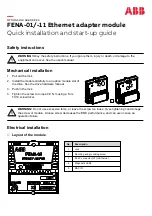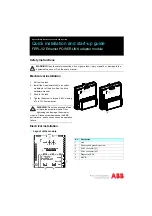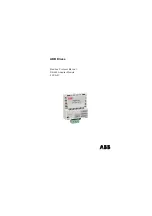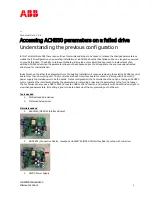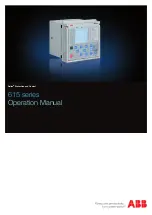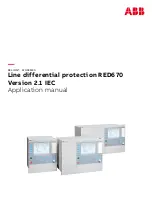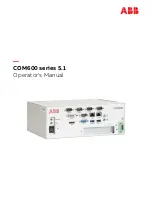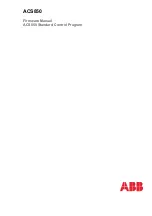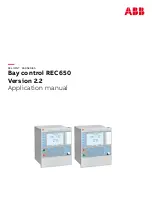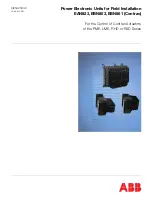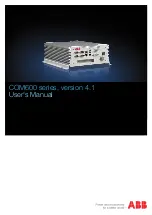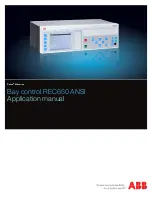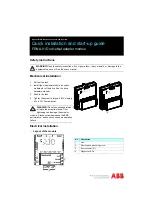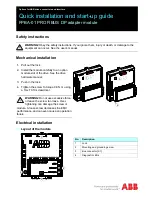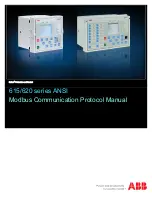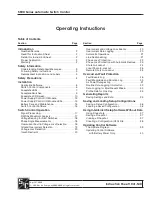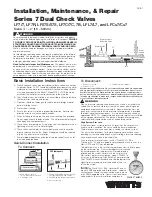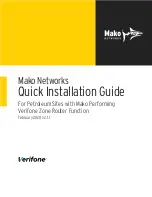
© Danfoss A/S (RC-MDP/MWA), 2014-05
DKRCI.PI.HL0.C3.02 / 520H4520 3
ENGLISH
Installation
Refrigerants
Applicable to HCFC, HFC and R717
(Ammonia).
Flammable hydrocarbons are not
recommended. The valve is only
recommended for use in closed circuits. For
further information please contact Danfoss.
Temperature range
PM: –60/+120°C (–76/+248°F)
Pressure range
PM: The valves are designed for a max.
working pressure of 28 bar g (406 psi g).
Technical data
The PM 3 can be used in suction, liquid,
hot-gas and liquid/vapour lines.
The PM 3 regulates the flow of the
medium by modulation or on/off function,
depending on the control impulse from the
screwed-on pilot valves.
The PM 3 has three connections for pilot
valves: two in series, marked “S I” and “S II”,
and one in parallel with these two, marked
“P”, see figs. 2 and 3.
Schematic examples of pilot valves
connected to the PM can be seen in figures
5, 6, 7, and 8.
If only two pilot valves are necessary
for the function required, the third pilot
connection must be sealed with a blanking
plug (see fig. 5). A blanking plug is supplied
with the valve.
Regulating range
Dependent on pilot valves.
Opening differential pressure (∆p)
The PM main valve requires a minimum
opening differential pressure of 0.07 bar
(1 psi) to begin to open and 0.2 bar (2.8 psi)
to be completely open.
Note: The valve opens when differential
pressure against the direction of flow
occurs.
Installation
Flange set for the PM is delivered
separately. The valve must be installed
with the arrow in the direction of the flow
and the top cover upwards (fig. 4). The top
cover can be rotated 4
×
90° in relation to
the valve body.
The valve is fitted with a spindle for manual
opening.
If an external pilot valve is used, the pilot
line must be connected to the upper side
of the main line so that any dirt and oil
from the plant will not find its way into the
pilot line.
If the PM 3 is to be used as a solenoid valve
in a liquid line, external control pressure
cannot be recommended because it can
cause liquid hammer.
The valve is designed to withstand a high
internal pressure. However, the piping
system should be designed to avoid liquid
traps and reduce the risk of hydraulic
pressure caused by thermal expansion. It
must be ensured that the valve is protected
from pressure transients like “liquid
hammer” in the system.
Mounting of valve flanges
When welding/soldering the flanges to
the system piping use only materials and
welding/soldering methods compatible
with the flange material.
• Make sure that piping into which a valve/
flange is installed is properly supported
and aligned square and plumb to the
joining sections.
• Ensure that the finalized valve assembly
is free of any stresses from external loads.
• Make certain that the heat affected
zones (inside and outside) and the
mating surfaces of gasketed joints are
free of debris and rust and are in good
condition.
• Use only new gaskets manufactured by
Danfoss.
• Make sure that the bolts are adequately
tightened in an alternating pattern.
• Use only original Danfoss stainless steel
bolts provided with the valve. Stainless
steel bolts offer corrosion protection
and they ensure safe operation across
the design operating range of the valve
when installed properly.
Note: Stainless steel bolts have a
slightly lower yield strength compared
to carbon steel bolts. Be careful not to
over-tighten the bolts.
• Ensure that flanges / valves are properly
pressure tested, leak tested, evacuated
before charging with refrigerant in
accordance with ANSI /IIAR 5, EN378-2 or
ISO 5149-2.
PM valves must not be mounted in systems
where the outlet side of the valve is open
to atmosphere. The outlet side of the valve
must always be connected to the system
or properly capped off, for example with a
welded-on end plate.
Colours and identification
The PM valves are Zinc-Chromated in the
factory. If further corrosion protection is
required, the valves can be painted.
Precise identification of the valve is made
via the ID plate on the top cover.
The external surface of the valve housing
must be prevented against corrosion
with a suitable protective coating after
installation and assembly.
Protection of the ID plate when repainting
the valve is recommended.
Maintenance
Service
The PM valves are easy to dismantle and
most of its parts are replaceable. When the
bottom cover is removed, the strainer can
be taken out for cleaning.
Do not open the valve while the valve is
still under pressure.
- Check that the gasket has not been
damaged. Ideally, the gasket should be
replaced.
- Check that the spindle is free of scratches
and impact marks.
- If the teflon ring has been damaged, the
parts must be replaced.
Assembly
Remove any dirt from the body before the
valve is assembled. Check that all channels
in the valve are not blocked with particles
or similar.
Tightening
Tightening torques
See fig. 1 and table 1.
Always carry out this operation when
the manual operation device has been in
use (see fig 9)
1. Remove the cap (
A
) and tighten the
spindle (
B
) anticlockwise with 8 Nm
(5.9 lb/ft)
2. Remount the cap (
A
) and tighten it
clockwise with 8 Nm (5.9 lb/ft)
Use only original Danfoss parts, including
packing glands, O-rings and gaskets for
replacement. Materials of new parts are
certified for the relevant refrigerant.
In cases of doubt, please contact Danfoss.
Danfoss accepts no responsibility for
errors and omissions. Danfoss Industrial
Refrigeration reserves the right to make
changes to products and specifications
without prior notice.
The following text is applicable to the UL
listed products PM3 (80-125)
Applicable to all common non-flammable
refrigerants, including/excluding (+)
R717 and to non-corrosive gases/
liquids dependent on sealing material
compatibility (++). The design pressure
shall not be less than the value outlined
in Sec. 9.2 of ANSI/ASHRAE 15 for the
refrigerant used in the system. (+++).





